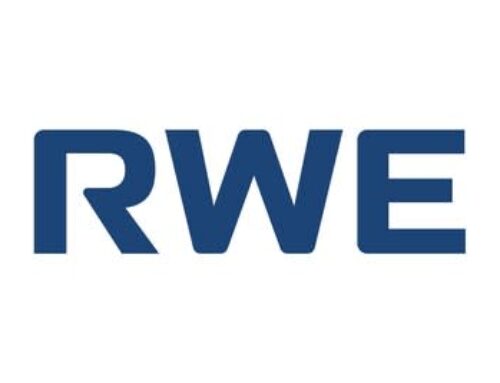Virtual Power Purchase Agreements May Be A Quick Fix In Climate Quest
May 13, 2025
We must triple our renewable energy use by 2030 to reach our net-zero goals. Emerging technologies are crucial long-term, but we need immediate solutions. Virtual power purchase agreements are an acceptable way to do both. They allow buyers to protect themselves from market price fluctuations while helping project developers improve their revenue prospects.
That’s healthy for the green energy economy. Investments in clean technologies fuel business growth and reduce greenhouse gas emissions. Large companies are leading the way regarding virtual power purchase agreements, giving smaller businesses access to clean energy.
“If we double down on energy efficiency and triple up on clean energy by 2030 worldwide, we could stay under 2 degrees Celsius, says Jim Boyle, chief executive of Sustainability Roundtable Inc. in Boston, in an interview with me. “We can do it with the technology we have right now. Innovative transaction structures make this possible. It’s a bright light in this darkening horizon.”
Companies hire the Sustainability Roundtable to oversee the development, negotiation, and execution of renewable energy agreements. Virtual power purchase agreements lead to the sale of renewable energy credits, guaranteeing the development of green energy projects. The firm coordinates multiple buyers to achieve scale.
Its goal is to facilitate 10 gigawatts by 2030.
Consider Cisco, which signed a virtual power purchase agreement in March 2025: The agreement will generate 50 megawatts of power from the Star Dairy solar project and 50 megawatts from the Rosebud solar project, both of which are in Texas and spearheaded by the renewable energy company X-ELIO. Cisco aims to reach net zero across its value chain by 2040. The developer builds and owns the solar array, allowing the business to focus on its core competency.
Biogen, IDEXX Laboratories, and Waters Corporation are involved in the same virtual power purchase agreement, which allows renewable energy credits to be purchased. The aggregated transaction leads to real renewable energy projects, in this case, 172 megawatts over 10 years.
“As Cisco looks to reach its net-zero target across its value chain, aggregated renewable energy procurements with other corporate buyers figure significantly in our renewable energy transition approach,” said Andy Smith, director of energy and technology, in a release. “Joining other buyers enables us to spread our procurement across multiple transactions, diversifying our renewable energy portfolio in a way that decreases risk and increases cost-effectiveness.”
Too Little Too Late?
Global climate talks aim to limit temperature increases, which mitigates droughts, floods, and food and water shortages. Scientists say we are nearing the 1.2 degrees Celsius mark and are on track to reach 2.7 degrees. The urgency is apparent.
According to the International Renewable Energy Agency, the mission is to triple the use of renewables and reach 11.2 terawatts by 2030, adding an average of 1,044 gigawatts of new capacity each year. The agency also said we must reduce CO2 levels by 43% by 2030 and 60% by 2035.
The good news is that renewable energy prices are falling fast: The agency says there have been $55 billion in consumer savings compared to alternative fuels since 2020. Power purchase agreements and the resulting renewable energy credits could speed that along even more by creating scale.
The largest commercial and industrial companies have led the renewable energy movement primarily by entering into power purchase agreements. Indeed, these sectors collectively consume 60% of the electricity in the United States. Amazon, Facebook, Google, General Motors, Walmart, and Salesforce are among those leading the push for clean energy procurement. For instance, Google has signed contracts to acquire 7,000 megawatts globally. That’s a $3.5 billion investment.
Meanwhile, Wayfair signed a virtual power purchase agreement that may generate 45,000 megawatts/hours of energy. That’s enough to cover about 80% of the company’s electricity needs in North America. Wayfair has said this deal will help cut its Scopes 1 and 2 emissions by 63% by 2035 from a 2020 baseline. Scope 1 emissions come directly from the company’s processes, while Scope 2 represents the energy it buys from others.
The agreement, which also involves Akamai Technologies and Teradyne, finances the Prairie Solar project in Champaign County, Illinois, which is being developed by the BayWa r.e.
The key difference between a virtual and actual power purchase agreement is that the buyer does notreceive the electricity with the former. It’s a financial contract. The Sustainability Roundtable says that its deals lead to projects being built and have created $143 million in economic benefits.
“There is now a big debate about using these credits to build new renewable energy outside the grid from where you draw your demand. If companies can’t do this, that would change everything. In other words, can companies or municipalities go into coal country and sign a long-term contract to produce more renewable energy? They want these credits for net-zero accounting,” says Boyle.
“Right now, it is best practice to displace coal,” he adds. “It only matters if you caused the project. If you didn’t, it’s just a piece of paper and essentially greenwashing, which does not contribute to the fight against climate change.”
Corporate America wields a powerful weapon in the fight against climate change: virtual power purchase agreements, which can boost the supply of green energy and enhance the quality of life in many parts of the country. They serve as a quick fix in the quest to triple renewables and drastically cut heat-trapping emissions.
Search
RECENT PRESS RELEASES
Related Post




